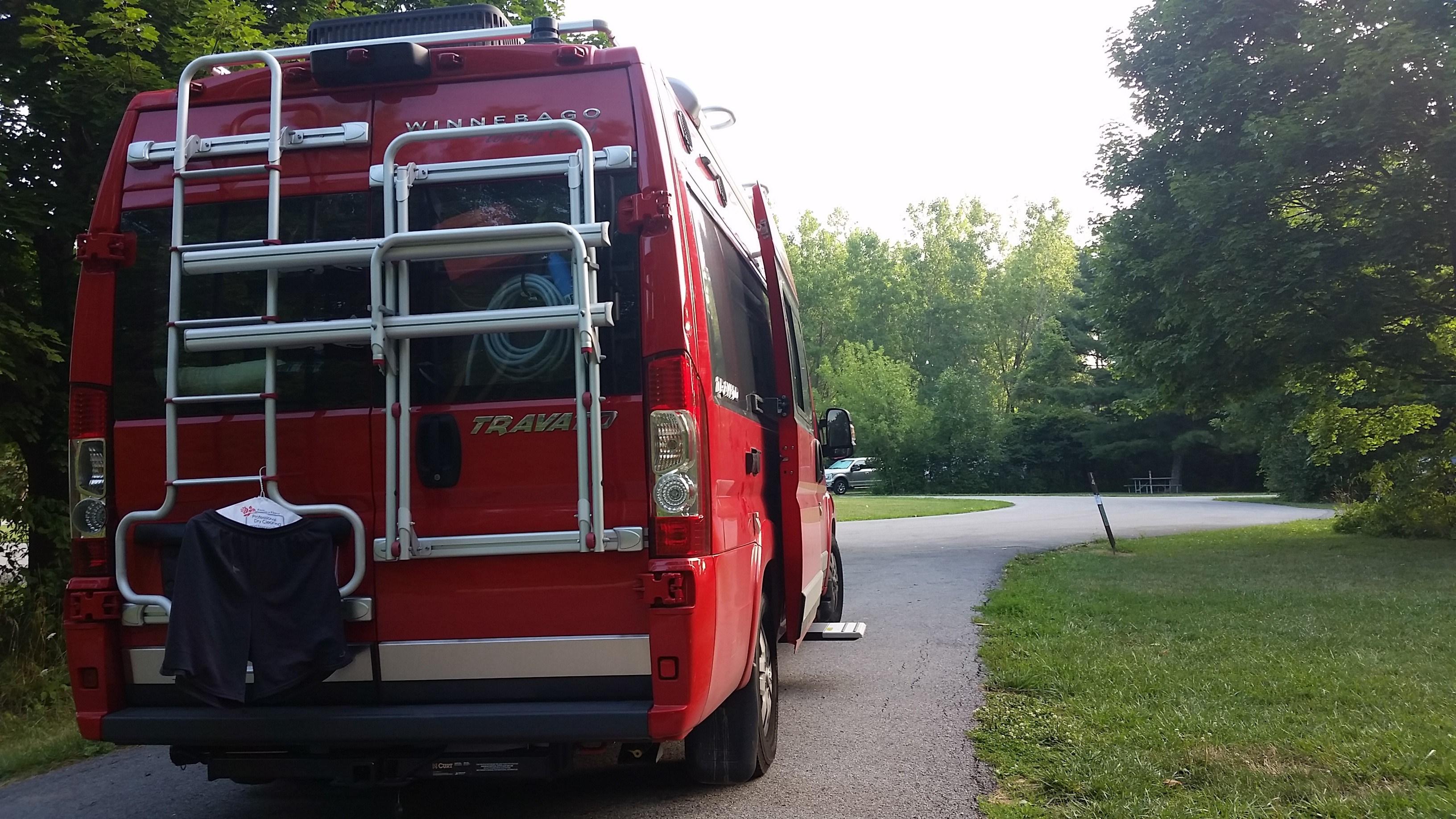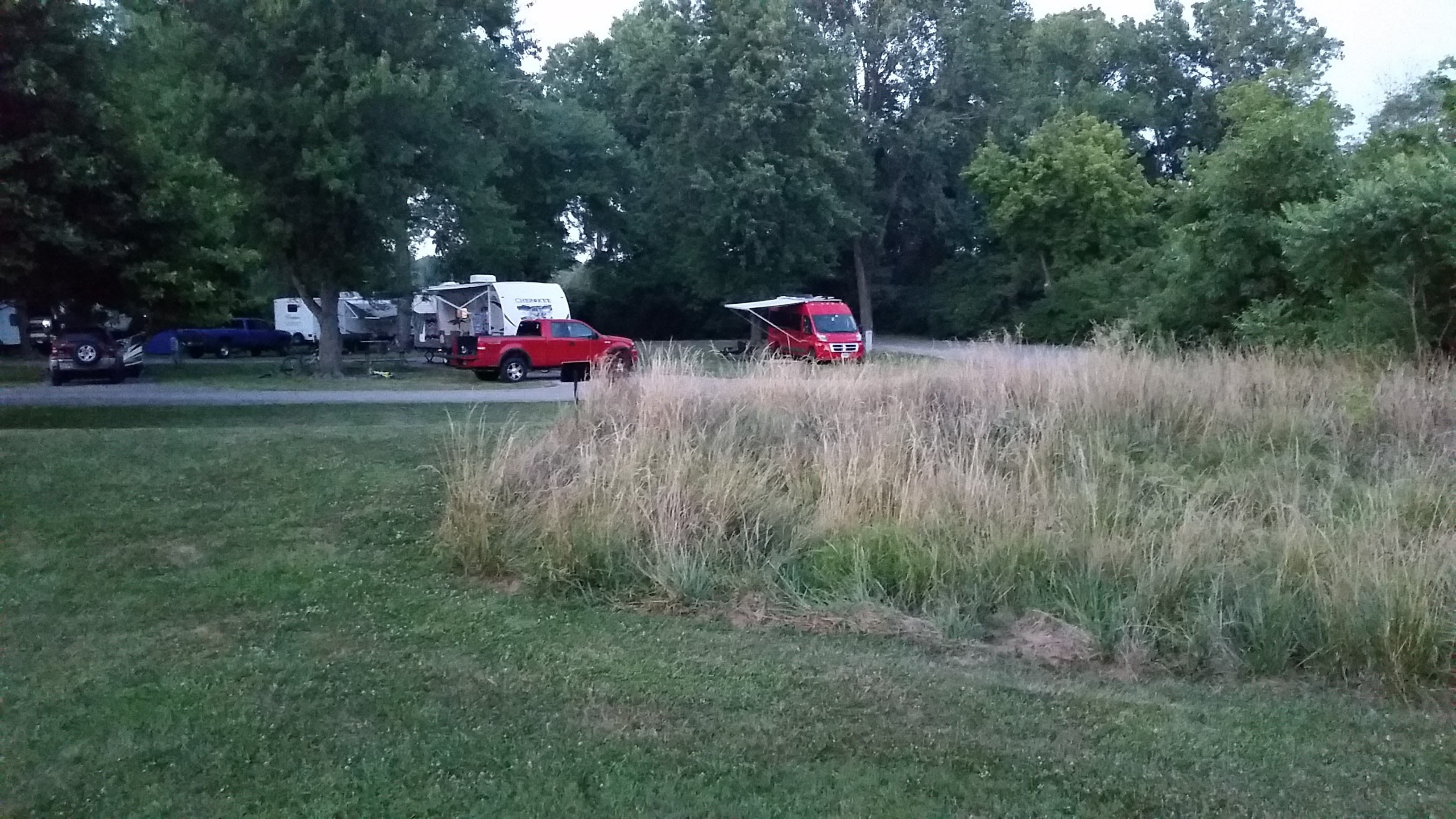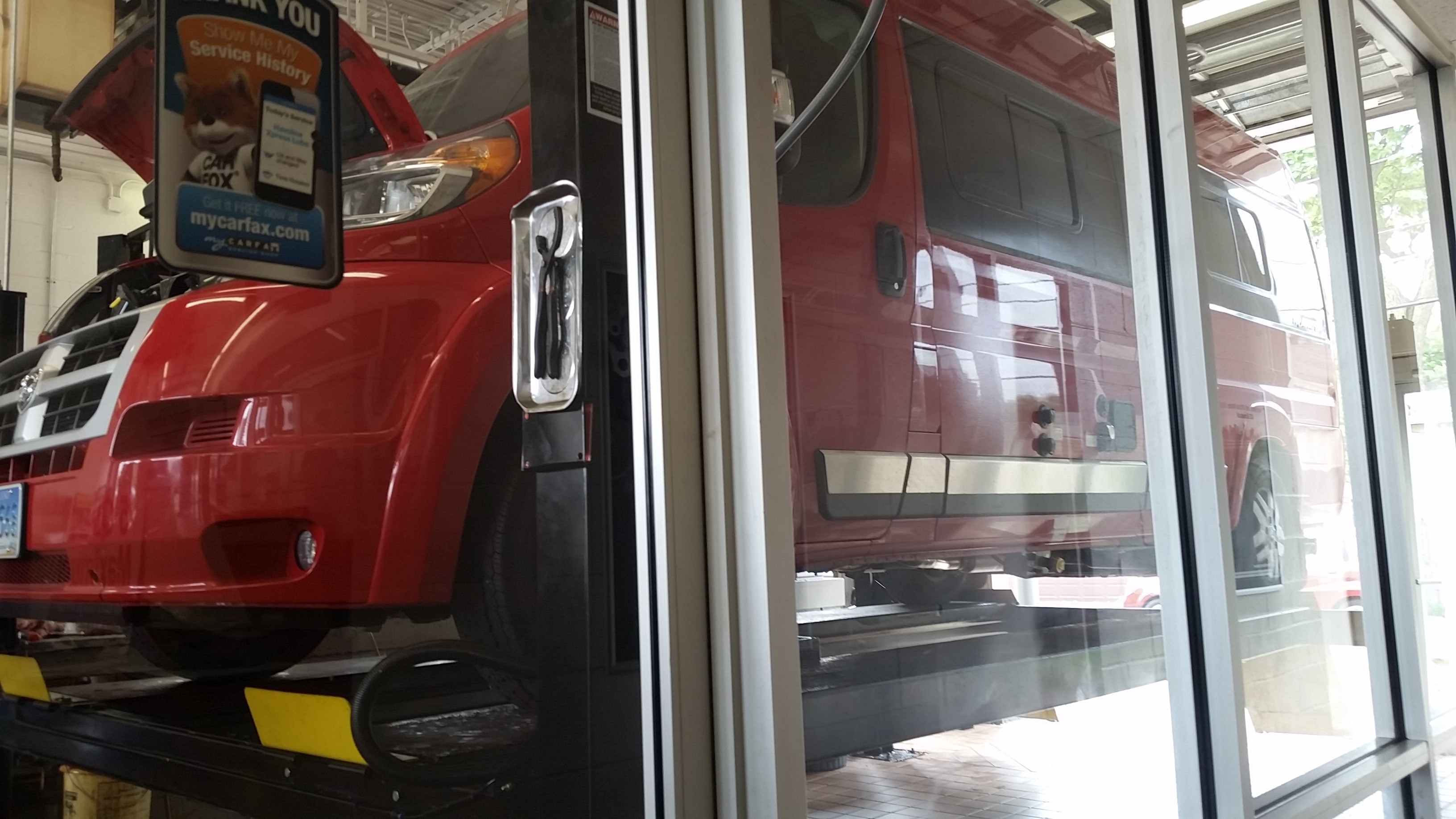
Midwest via Travato
After a week on the road in the Midwest, we've got some amazing stories to tell. We've learned a lot about RVing and more than a little about each other. And yes, we saved some money.
Our Midwest trip was a vacation adventure unlike any we've had so far. It featured loads of family time. We stayed in new places and did new things. And of course, we had Roxanne.
While it's true that we are newbies to the RV scene and only took our first trip this spring, we're veterans of the two activities RVing combines: driving and camping.
We've been driving to the Midwest in back in cars, both ours and rented, for the better part of two decades now. And we've definitely spent plenty of time in campgrounds, usually in tents until this year. So in learning and getting better at this whole RV thing, we weren't taking on new skills so much as refining and combining old ones. Still... plenty of lessons learned.
Lesson 1: Your conveyance is your home base
In an RV, you're combining your driving machine with your sleeping quarters and your kitchen. This is a great thing! But it takes a little getting used to.
Leaving a campsite for the day really doesn't look any different from leaving a campsite for good. You want to pack up any chairs, mats, scooters and the like. When we went to catch the ferry to Put-in-Bay in Ohio, we cleared out camp like we'd never been there before. We needed to take showers before we left, so we drove the van to the shower building. I got done first, so I prepared lunch for the day and got some reading done in the parking lot. Then we drove our kitchen and bedroom-on-wheels and parked it in a regular parking lot in town. That's something you can't do in a tent, or even in a larger RV.
This freedom of mobility is amazing. There's no scrambling to find a bathroom after a long day of wandering around town, and you can brush your teeth without leaving your campsite too.
On the flip side, you don't want to lull yourself into thinking you can just unplug the van and hit the road. You have to check the cabinet drawer doors. Wash and put away the dishes. Stow any snacks and loose clothing. Fold up the beds. Oh, what a nice segue into...
Lesson 2: Odors must be destroyed
So, let's not discuss the wisdom of feeding your 7-year-old refried beans for lunch two days in a row and then going out for Mexican food for dinner. But needless to say, life in a tiny home on wheels, especially one that's parked in the sun, can get a little smelly. Here's a little advice and wisdom from those who know.
First, keep the air moving. The rooftop and bathroom vents don't require AC power and work well. All of the side windows have screens in them. Use these, and you'll be fine with three humans living in close quarters. Stay away or at least upwind from campfires if you can.
 Gonna do this? Think about where you're putting that shirt afterwards.
Gonna do this? Think about where you're putting that shirt afterwards.
Second, and much more importantly, remove things that could develop a foul odor early and often.
We had an incident with a Chinese food smell, which led us into pine tree "new car smell" air freshener territory until one of us had the wisdom to take out the garbage. Problem solved.
Remember that nice 6-mile run I took during our last morning in Illinois? It came with a soaking wet running jersey. I was perfectly clean when we left, but I had to hang up my shirt in the back before we hit the road. It wasn't a few minutes into our hours-long drive before all three of us realized this was going to be a problem. I stopped for some fabric freshener at a local drugstore and sprayed it down. The smell of artificial fragrance filled the van, until it dissipated, and the shirt still reeked. Lindy was actually considering a moonwalk to the back while we were driving, but I was concerned about her safety and didn't want her throwing my shirt out the window!
We eventually stopped, and I used an empty plastic takeout container to seal the offending garment away. We were able to wipe down some counters and run the fans for a little while before all the aunts, uncles, cousins and grandmas at dinner outside Toledo popped in for a look at Roxanne.
 Always hang your smelly workout clothes outside the van. Then burn them. Or something.
Always hang your smelly workout clothes outside the van. Then burn them. Or something.
The finances of our trip
Let's dispense with the obvious: buying an RV is expensive. Nobody ever does it as a way to save money. We've had a couple of Outdoorsy rentals that have helped with the cost a bit, and look forward to more in the future. But it won't help Roxanne come close to carrying her own weight.
That said, once you've taken the plunge, your ongoing vacation expenses are likely to be lower. For starters, I was stunned to learn how inexpensive RV insurance is. For personal use, on an occasional basis, the cost is much lower than insuring a car of the same age. It also includes protection for the contents, and coverage for medical expenses when you're on the road.
On maintenance, we're still almost in new-car mode because Roxanne has fewer than 10,000 miles on her. We got our first oil change when we had a few extra minutes in Illinois. The crew at the quick-lube had never seen anything quite like our camper van, but they did manage to get it a few feet up on the lift. Aside from an extra quart of oil, the service wasn't any more expensive than it would be for a car.
When traveling, as a general rule of thumb, we've found: gas is more expensive, food and lodging are less.
Fuel
We drove about 1,700 miles on our trip. We had a full tank of gas when we left, and returned with a full tank. We spent $192.84 on fuel, at prices ranging from just under $2 to $2.30 a gallon. Lindy's Ford C-MAX hybrid gets 2 or 2-1/2 times better gas mileage than Roxanne. So we probably spent about an extra $100 on gas because of the RV.
Food
On food, all of our breakfasts were in the RV. Lunches were on the road or out and about, using food we'd prepared ourselves. Even our snacks came from the van. We probably spent less than $20 the whole week on outside snacks, such as a pretzel at the zoo or our lemon sorbet at Put-in-Bay. We ate dinner out three times in six nights -- once by ourselves, and twice with family. Dinner the night we got home was leftovers from the trip. Our grocery budget covered us for the week even though we weren't home. With the meals and snacks out, we probably spent $150 on food.
What if we didn't have the RV? We tend to stay in hotels that include breakfast, so there's no extra expense there. If we'd gone out for lunch and dinner 7 times, and had to buy more snacks on the go, we would have spent at least $500. So we probably saved $350 on food because of the RV.
Lodging
On lodging, I can tell you exactly how much we saved because I booked this trip before we owned an RV. We were planning to stay in hotels in every location, but I had the foresight to book refundable reservations that I ended up canceling when we bought Roxanne. Some of these were hotels we knew, but most weren't. With an RV, you know what you're getting.
Leaving aside the comfort of sleeping in our own beds every night and not having to haul luggage, there's significant savings in campgrounds instead of hotels. And if you can boondock, as we did for one night on my mom's street, you're comparing a zero expense to a hotel expense.
Put-in-Bay (two nights)
Original: Comfort Inn Sandusky ($259.00)
Actual: East Harbor State Park ($70)
------
Northern Indiana (one night)
Original: Holiday Inn Express Schererville ($105.28)
Actual: My mom's street ($0)
------
Schaumburg (two nights)
Original: Hyatt House Schaumburg ($248.52)
Actual: Camp Reinberg ($120)
Camp Reinberg was the most expensive, in part because we're not Cook County residents. But it was still a nice place to stay and a big savings over the hotel option.
------
Toledo Area (one night)
Original: Staybridge Suites Maumee ($104.26)
Actual: Maumee Bay State Park ($35)
-----
So we saved $492.06 on lodging, with a bottom line total savings of $742.06 for the trip. Not bad!
Comments
Comments on this post are moderated, so they will not appear instantly. All relevant questions and helpful notes are welcome! If you have a service inquiry or question related to your RV, please reach out to the customer care team directly using the phone numbers or contact form on this page .

